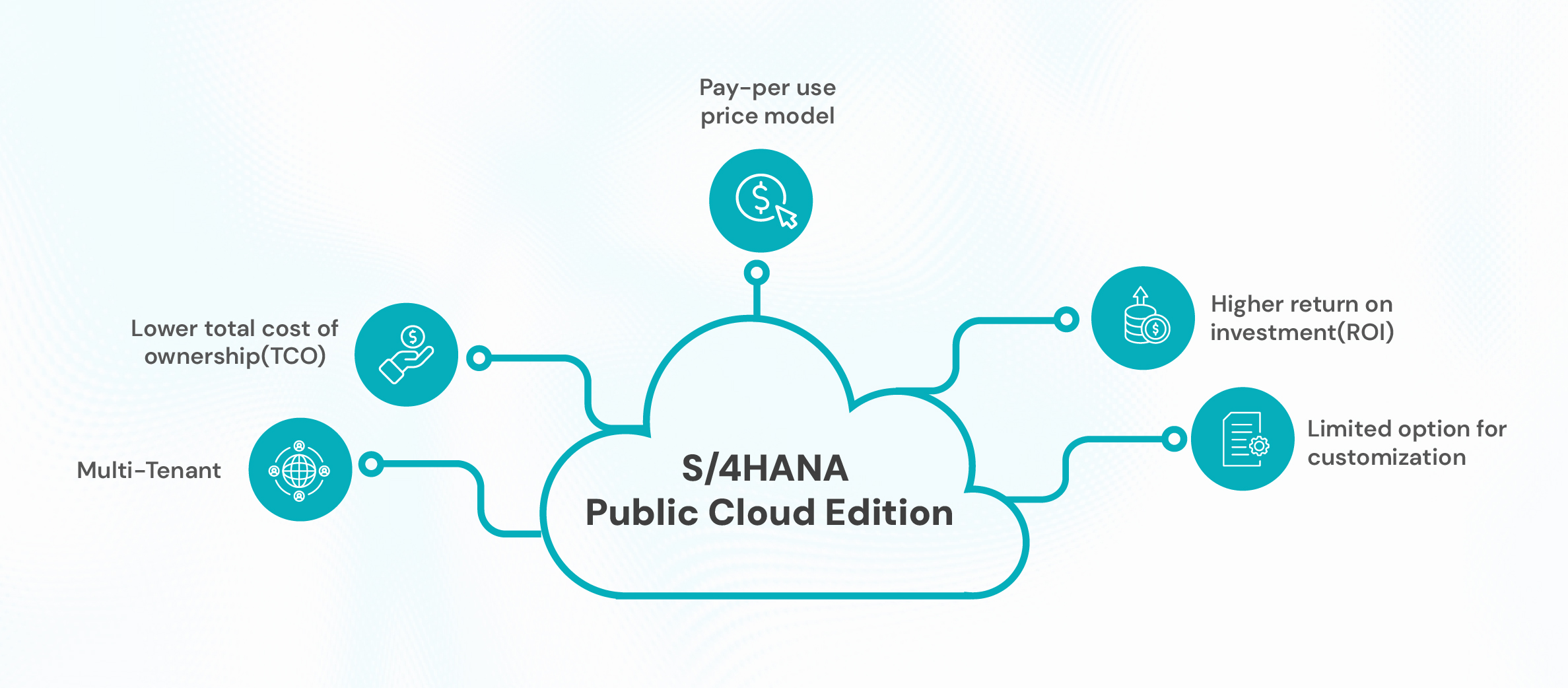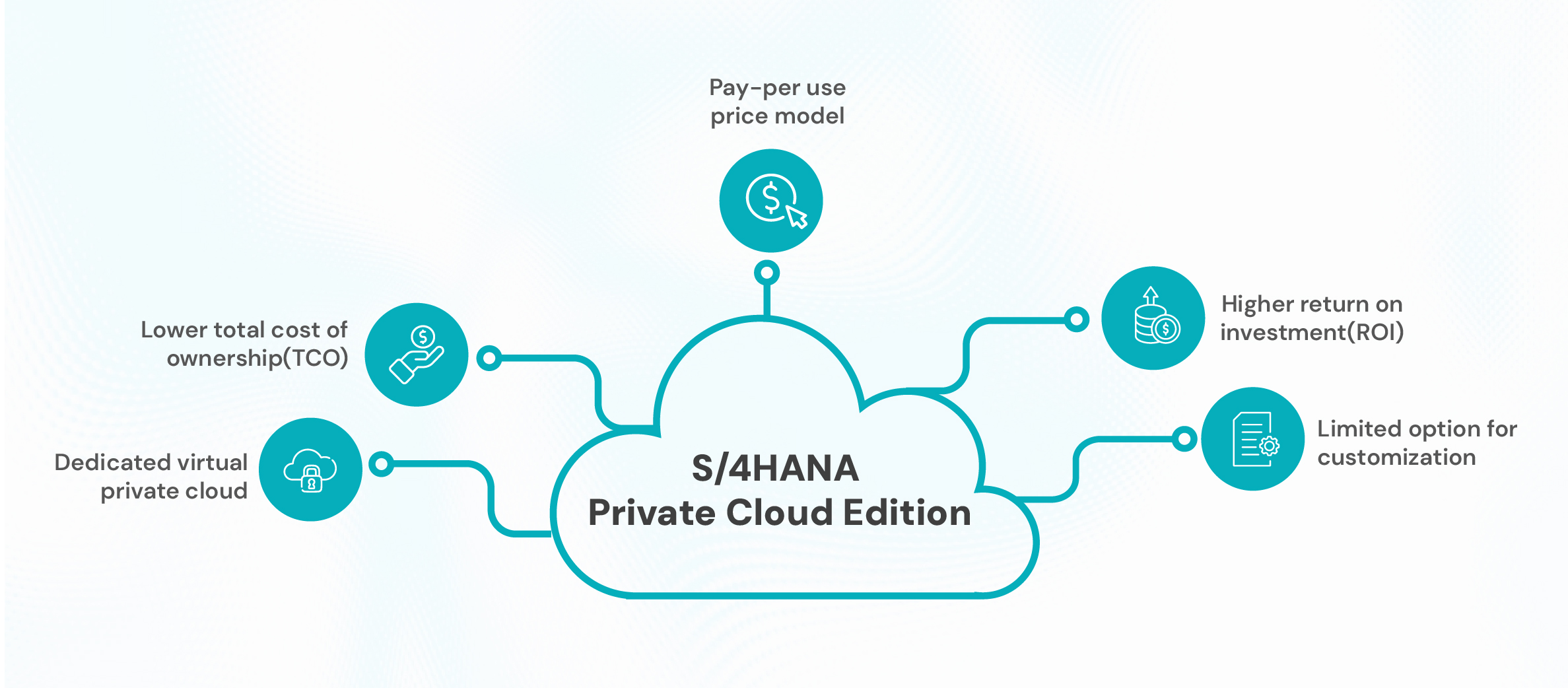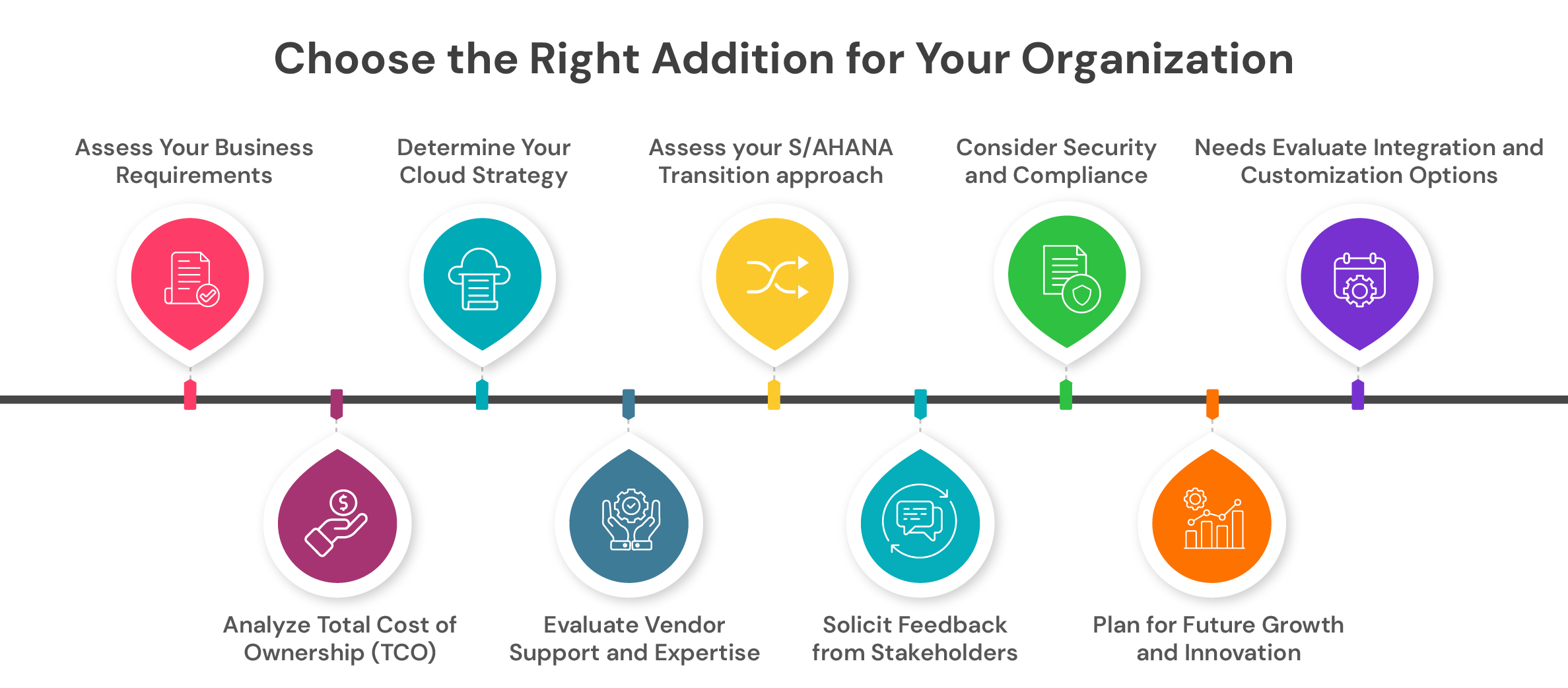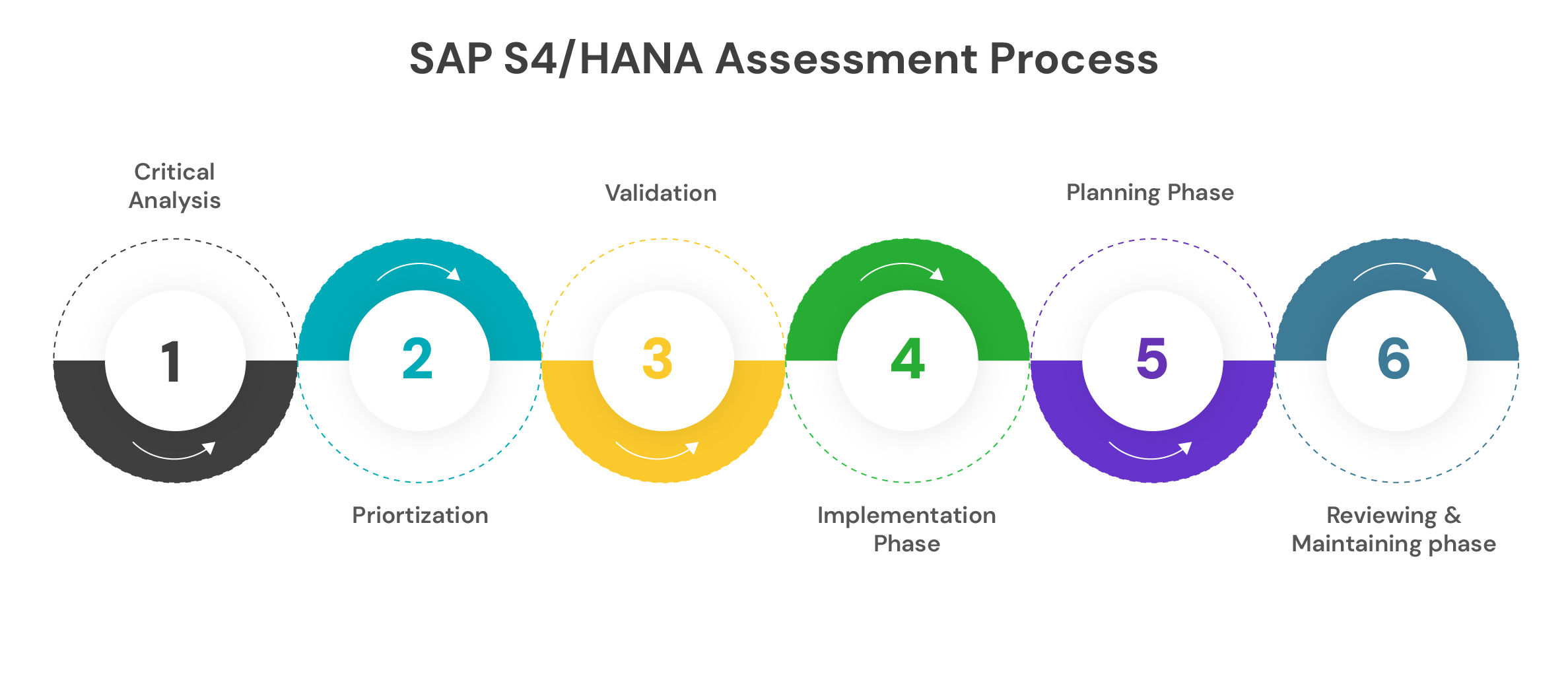SAP has evolved into one of the leading ERP suppliers, serving companies of all sizes and shapes. To cater to diverse audiences, the platform continues to evolve at an exponential rate. SAP S/4HANA is the most well-known product that this ERP solution has recently released to the market. When the business released the cloud version of SAP S/4HANA, users could access all of the features of the on-premise version. You also get all the advantages of its cloud edition, which results in increased production, better scalability, easier management, and lower costs.
The number of SAP S/4HANA users has grown rapidly, from 370 in 2015 to over 20,000 in the second quarter of 2022, particularly as people began to recognize the advantages of this enterprise resource planning solution.
Every kind of organization, from startups hoping to grow to major corporations preparing to automate their process, can benefit from SAP. The public and private editions of SAP S/4HANA were released by SAP to meet the expanding demands of these clients.
How can you decide which is more appropriate and better for your company? Both are unquestionably superior to the on-premise version and provide great advantages, but each edition has a wealth of special features and advantages. The specifics of private and public clouds will be covered in this essay.
What is SAP S/4HANA public cloud?
Third-party service providers manage the public cloud’s shared architecture. The public cloud is relatively less expensive than its private version because anyone can use the services via the internet. Having access to limitless functionalities at a reduced cost and without having to maintain a complicated IT architecture is the public cloud’s greatest benefit.
For startups and small enterprises without the internal technical know-how to handle daily technical operations, the solution makes sense. It’s a workable option for companies who wish to take use of all SAP’s advantages but are content to forgo sophisticated management over the cloud infrastructure.
What is S/4HANA Private Cloud?
A private cloud is an additional specialized business solution in which the complete IT infrastructure is managed by a third-party vendor. The private cloud is for major enterprises that do not want other users to share the same cloud IT service for data access or storage. Who is the only distinction?
Basically, the resources in the private cloud are only available to you and those to whom you have authorized access. For enterprises operating in delicate industries like healthcare or finance, this single-tenant infrastructure appears to be rather helpful. Large organizations are not the only companies that should use private clouds; any company operating in the compliance-based sector requires one in order to have greater control over its IT infrastructure.
Top 5 Differences between SAP S/4HANA Public & SAP S/4HANA Private Cloud
It is essential to comprehend the distinctions between the Public and Private Cloud deployment strategies while contemplating the SAP S/4HANA Digital Discovery Assessment. Different degrees of cost-effectiveness, control, and flexibility are provided by each choice. The following list of the top five distinctions will help you make your choice:
1. Deployment Flexibility
- Public Cloud: Ideal for companies looking for quick adoption and uniform procedures.
- Private Cloud: Provides closer to on-premise capabilities with customized code, industry-specific requirements, and more flexibility with customized configurations.
2. Upgrade & Innovation Cycle
- Public Cloud: Less control over timing, but always running the newest innovations thanks to a quarterly upgrade schedule overseen by SAP.
- Private Cloud: Offers greater control over upgrade cycles, allowing businesses to test and match changes to priorities.
3. Cost Structure
- Public Cloud: Perfect for mid-sized enterprises and organizations seeking a quicker return on investment, it offers subscription-based pricing with predictable expenses.
- Private Cloud: Offers greater value for businesses with sophisticated demands, but has a higher TCO because of infrastructure and customization requirements.
4. Customization & Extensions
- Public Cloud: Limited space for unique innovations, with an emphasis on standardized best practices. SAP BTP is used to facilitate extensions.
- Private Cloud: Enables complicated landscapes by supporting industry-specific procedures, deeper customisation, and legacy system interaction.
5. Governance & Control
- Public Cloud: This environment, also known as a public cloud, offers infrastructure and operational service that lessens IT expenditures but does limit the governance rights.
- Private Cloud: Typically favorable to a heavily regulated industry, it offers control around system architecture design, data residency, and data security options.
Why migration to SAP S/4HANA Public Cloud Edition might be the right choice for your organization
The SAP S/4HANA Public Cloud Edition is the perfect technology if the objective of a company is to modernize its ERP infrastructure and, in doing so, avoid the troublesome makeover processes. Following are a few major reasons for why this might be a right choice for your business:
Embracing Industry-Proven Practices
Being based on a recognized set of best practices, the Public Cloud edition assists businesses to optimize processes that have been tried in various industries. These tried-and-true frameworks are to be used to maximize an organization’s efficiency, rather than those processes being developed from scratch.
Accelerated Path to Value Realization
A business can accelerate going live and minimize deployment costs and time by deciding on preset processes and using guided tools for adoption. Considerable results and ROI will become evident within weeks rather than years.
Seamless Updates and Continuous Innovation
On the Public Cloud, new software features, compliance upgrades, and enhancements are rolled out every quarter straightaway. This means that since upgrades are no longer allotted any downtime, your platform forever remains up to date.
Robust Security, Compliance, and Scalability
Managed by SAP itself, the Public Cloud provides an enterprise-grade level of security, compliance, and data protection. Additionally, it grows with your organization with ease, giving you the confidence to enter new markets and regions.
Open and Extensible Platform
Business companies can enhance several core ERP processes through APIs and add-ons with newer SAP Business Technology Platform (BTP) technologies, e.g., automation, analytics, and artificial intelligence (AI), without harming system integrity.
Accelerate your cloud journey with confidence. Discover how the SAP S/4HANA Public Cloud empowers your business with agility, scalability, and innovation to thrive in the digital era.
Why migration to SAP S/4HANA Private Cloud Edition might be the right choice for your organization
For companies with complex operations and high levels of customization, the SAP S/4HANA Private Cloud Edition offers the best combination of cloud benefits with enterprise-level management. Here are some reasons why it might be the best option for your company:
1. Streamlined Operations and Optimized Support
By utilizing SAP’s managed services, the Private Cloud version enables you to centralize procedures and combine IT environments. By simplifying operations, consistent performance and optimal support for business-critical processes are ensured.
2. Innovation at Your Pace
The Private Cloud provides freedom in implementing new features and improvements, in contrast to the Public Cloud’s set quarterly update schedule. This allows your company the freedom to plan for improvements on an internal timetable and change management model.
3. High Availability of Mission-Critical Systems
Private cloud guarantees enterprise resilience, disaster recovery, and performance monitoring for industries that may expect system outages. This type provides uninterrupted access to mission-critical data and applications.
4. Lower Total Cost of Ownership (TCO)
The Private Cloud lessens the requirement for expensive infrastructure expenditures by fusing the benefits of SAP S/4HANA with cloud scalability while retaining the capacity to keep current customizations. It makes it possible for businesses with intricate ERP systems to migrate at a reasonable cost.
Transform with SAP S/4HANA Private Cloud
Unlock tailored ERP solutions with SAP S/4HANA Private Cloud to ensure security, flexibility, and seamless migration for your organization’s growth.
Choosing the Right Edition for Your Organization
There is no one-size-fits-all description for the option between private and public clouds, which means the choice is dependent on a more holistic view of the IT strategy of your business along with its present and future objectives. Important factors to select would be:
Assess Your Business Requirements
Assess if your business thrives on standardized best practices (ideal for public cloud) or requires complicated and industry-specific procedures (ideal for private cloud).
Determine Your Cloud Strategy
Consider long-term direction. Do you want a hybrid-cloud approach that is more regulated and allows for incremental developments, or do you want SaaS implemented in an extremely smooth and fast manner without any regulations?
Assess Your S/4HANA Transition Approach
Determine whether your roadmap is better served by a brownfield (system conversion) or greenfield (new implementation) approach. While private clouds support both, public clouds are better for greenfield projects.
Consider Security and Compliance Needs
While public clouds offer standardized compliance managed by SAP, highly regulated sectors could require the added governance and data residency management of private clouds.
Evaluate Integration and Customization Options
While private clouds offer more intricate system integrations and deeper customisation, public clouds offer simpler extensibility through SAP BTP and less customization.
Analyze Total Cost of Ownership (TCO)
In contrast, a private cloud would have a greater initial capital investment but could generate the most value over the long term for more complex organizations, while a public cloud would have good predictable subscription pricing.
Evaluate Vendor Support and Expertise
Look for the availability of capable partners and managed services that will work in tandem with you to ensure that the edition you have chosen is properly deployed and continuously fine-tuned.
Solicit Feedback from Stakeholders
Right before deciding on the deployment model, it is crucial to ensure alignment of expectations, needs, and goals, including crucial stakeholders such as business leaders and IT.
Plan for Future Growth and Innovation
Choose what best enhances your ability to build digital transformation on a scale that supports evolution and continuous innovation on market changes.
Migrate to SAP S/4HANA Seamlessly
Simplify your journey to SAP S/4HANA. Discover how SAP S/4HANA Data Migration helps you transfer data smoothly and accelerate cloud adoption.
How Much Do They Cost?
SAP can provide you with a price based on your needs. Because the corporation charges extra for providing a dedicated infrastructure, the private cloud version of SAP S/4HANA typically costs more than its public counterpart. The public cloud version appears to be the greatest option if money is tight.
It is not only less expensive than the private cloud version, but it is also simpler to set up and doesn’t require any level of technical knowledge. If you want to quickly and effortlessly launch your on-premise ERP solution, the SAP S/4HANA public edition is your best option.
SAP S/4HANA Assessment
SAP S/4HANA assessment is the process of determining and putting ERP solution enhancements into practice. It enables you to assess the present state of your SAP solution and understand where improvements need to be targeted. There are three phases: planning, execution, and sustainment.
A thorough diagnosis can provide information on the current operation of your SAP S/4HANA implementation, management tasks it currently assists with, and changes required. The next step is migrating your on-premise SAP S/4HANA data into the public or private cloud edition.
Conclusion
By consciously committing to SAP S/4HANA Cloud, the agenda for enterprise agility, innovation, and resilience is set. It is thus not just a technology conversion. The choice, whether you go for Public or Private Cloud Edition, should be based on concrete business goals and your company’s overall digital strategy as guided by the Public Cloud Edition for its speed, ease of use, and living innovation.
Working with an experienced SAP migration partner ensures that your transition is smooth, aligned with best practices, and tailored to your unique business requirements. As a full Digital Discovery Assessment is conducted, accounting for business, legal needs, and potential growth, you can be confident in the next step choice. The moment a chosen solution is installed, your business will be ready to embrace transformation to simplify workflows while supporting continued success through digital evolution.
SAP Solution Architect with 23+ years in logistics and SCM. Expert in SAP S/4HANA with hands-on experience in global rollouts, upgrades, and enterprise solution delivery.









